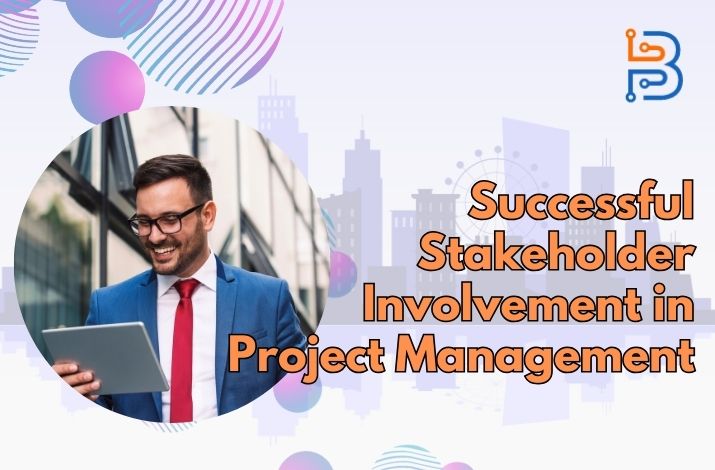The Essential Techniques for Successful Stakeholder Involvement in Project Management

Effectively engaging with stakeholders constitutes a vital component of successful project management; it wields the power to mould both the project’s outcomes and overall organizational accomplishments. Proficient stakeholder management necessitates an intentional strategy: one that transcends elementary communication methods. In this exhaustive blog post, our focus remains on fostering purposeful stakeholder involvement at each stage within a project’s lifespan.
Successful Stakeholder Involvement in Project Management
Understanding the Significance of Stakeholder Engagement
Individuals or groups with significant interest in a specific project possess the power to influence or be impacted by its outcomes – these are the stakeholders. Acknowledging effective engagement as an essential first step in competent project management is crucial; when we fully engage our stakeholders, they typically contribute more positively: offering invaluable inputs, providing guidance and lending their support towards the endeavor. Additionally, active involvement mitigates the risk of opposition or resistance from these influential parties.
Building a Comprehensive Stakeholder Map
One fundamental strategy for effective stakeholder engagement involves creating a comprehensive stakeholder mapping. This process requires identifying and categorizing the stakeholders based on their level of influence, interest, and potential impact on the project. This visual tool–utilized by project managers–directs them in customizing communication strategies to engage each unique group with greater effectiveness.
Tailoring Communication Strategies for Different Stakeholder Groups
A diverse range of needs, preferences, and expectations characterizes the stakeholders in project management. This reality necessitates that project managers adopt an approach to communication which is tailored and flexible; they must consider each stakeholder group’s unique attributes. In this way, establishing effective communication–the provision of pertinent up-to-date information for stakeholders becomes guaranteed: this outcome cultivates an atmosphere distinguished by transparency and trust. Customizing communication methods appropriately holds the key: detailed project updates for internal teams; succinct, high-level summaries–adaptation is critical. Successful interaction and collaboration hinge on this necessity.

Proactive Stakeholder Engagement: Anticipating Needs and Concerns
Maintaining a proactive stance fundamentally underpins effective stakeholder engagement; it involves anticipating–and addressing–the needs and concerns of stakeholders before they even surface. Project managers, by adopting this approach, can address potential issues: turning them into stepping stones rather than substantial obstacles. To achieve such an outcome–one where problems are nipped in the bud–consistent communication remains crucial along with active listening and heightened sensitivity to project environment dynamics that perpetually shift. By adopting a proactive approach, we foster positive relationships with stakeholders; this ultimately results in smoother project execution and amplifies our overall success.
Establishing Clear Project Goals and Expectations
Thorough stakeholder involvement in a project necessitates a comprehensive understanding of the objectives and expectations. Project managers play an indispensable role, not only conveying these aspects but also harmonizing all stakeholders’ efforts. Open channels of communication are fostered by project managers to articulate effectively: the goals of the project; its key milestones, critical touchpoints along its timeline, and expected deliverables or outcomes, integral components that measure success. This approach actively manages expectations and cultivates a unified vision; it inspires stakeholders to participate proactively, contributing positively towards the success of the project.
Read Also: How to Choose the Best Document Management System
Incorporating Stakeholder Feedback into Decision-Making
Beyond the mere dissemination of information, stakeholder engagement involves a proactive integration of stakeholder input into decision-making procedures. When we adopt this cooperative strategy, it significantly improves project results’ caliber and strengthens the involved stakeholders’ sense of ownership. Appreciating and incorporating a wide array of viewpoints empowers project managers to establish an atmosphere for the project that is both robust and flexible; ultimately fostering successful outcomes as well as long-term sustainability.
Cultivating Relationships through Stakeholder Involvement
To engage stakeholders effectively, one must go beyond the limits of formal project communications and actively cultivate relationships. Actively involving stakeholders in relevant discussions, workshops, and decision-making forums not only fosters a sense of belonging but also inclusivity among all involved parties. Through this cooperative strategy, relationships solidify; a sturdy support network forms, that can be leveraged to overcome obstacles while promoting collaboration: ultimately driving the project towards its desired outcome – success! Enhancing communication channels and maintaining transparency build stakeholders’ trust in the project’s direction; this fosters superior collective decision-making, ultimately securing the achievement of shared goals and objectives.
Adapting Communication Channels to Technological Advances
In our modern digital era, successful stakeholder engagement and collaboration necessitate seizing the opportunities presented by technological advancements. Proactively, project managers are required to hunt for diverse communication methods that cater directly to their stakeholders’ preferences; they should also implement these strategies effectively. By incorporating options such as video conferences: comprehensive collaboration platforms–sophisticated project management software in particular, it vastly improves the accessibility experience for all involved parties at once. Utilizing technology effectively: this strategic approach enables us to bridge the gap between stakeholders, facilitating smooth and efficient communication across all parties involved. Further refining our method for stakeholder engagement guarantees that each member of the project team remains informed–and importantly–engaged; as a result, we witness more streamlined processes leading inexorably towards improved outcomes in every undertaken endeavor.

Managing Stakeholder Expectations Throughout the Project Lifecycle
As a project advances: stakeholder expectations undergo changes and transformations. Project managers must actively manage these evolving expectations; they should deliver consistent updates on the project’s progress, promptly address any emerging concerns–and fine-tune communication strategies as necessary. Transparently communicating the various challenges, potential risks, and triumphs throughout a project preserves stakeholders’ realistic understanding of the situation. Minimizing stakeholder dissatisfaction and misunderstandings about the project’s trajectory is an approach we adopt. Effective communication, together with expectation management, enhances our standing in stakeholder relationships; it fosters success throughout the entire project.
Read Also: How Work Management Software Simplifies Strategic Planning?
Evaluating and Iteratively Improving Stakeholder Engagement Strategies
Refining stakeholder engagement strategies necessitates continuous evaluation: project managers must regularly assess–with utmost effectiveness in mind–their communication and engagement approaches. They should seek feedback from stakeholders; this iterative process enables adjustments, and improvements, a dynamic responsiveness that remains pivotal to the evolving needs of any given project.
Ending Note
Effective stakeholder engagement–a dynamic, strategic process necessitating meticulous planning and constant vigilance throughout the project lifecycle–involves various aspects. Successful project managers acknowledge this multifaceted nature; they construct comprehensive stakeholder maps, adapt communication channels, and foster relationships. When these strategies integrate into their management practices—organizations cultivate an environment where stakeholders are not only informed but actively contribute to the project’s success as well.






